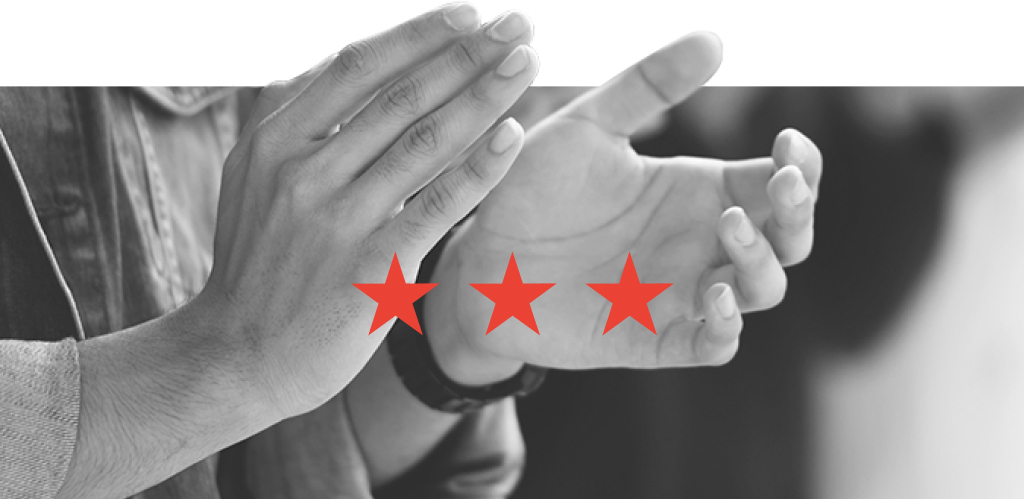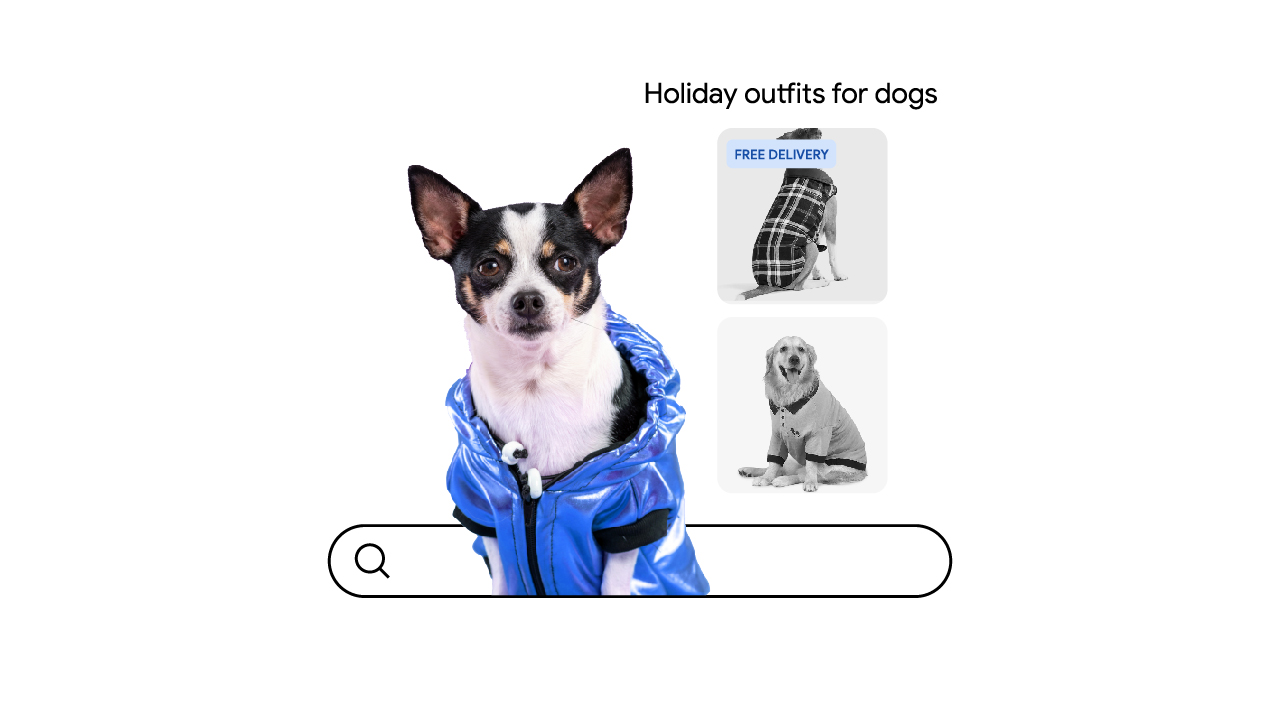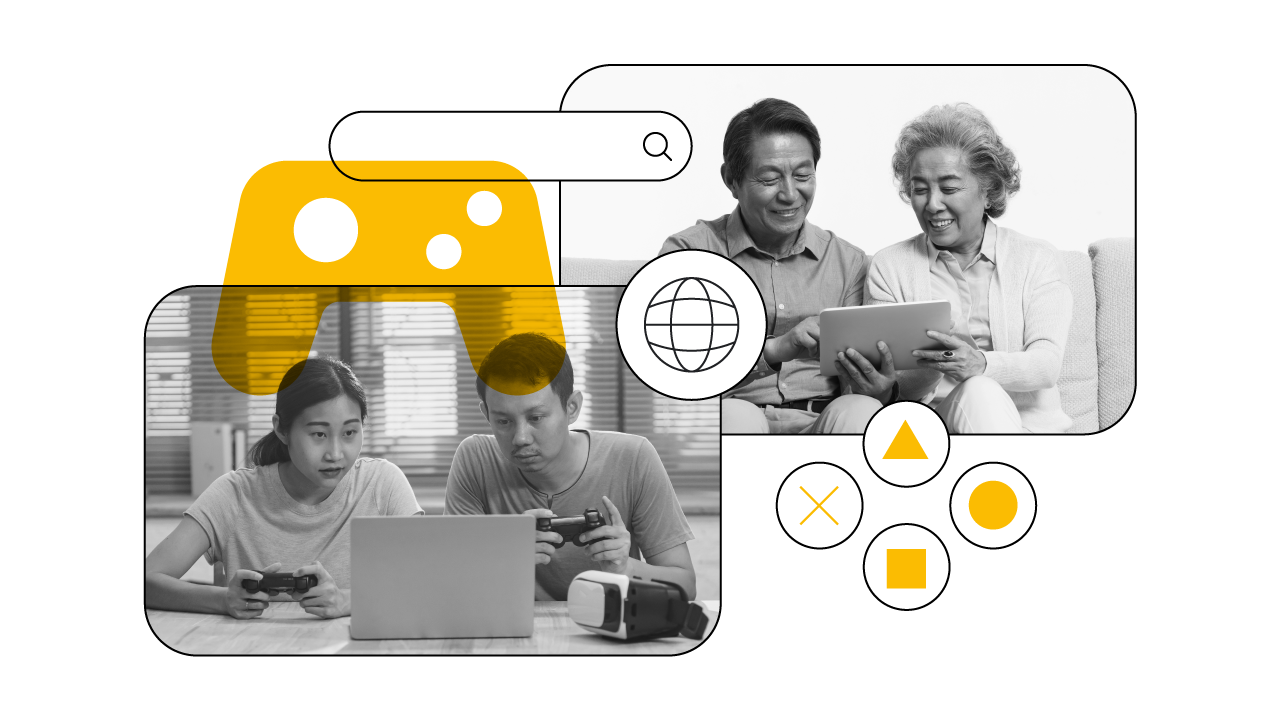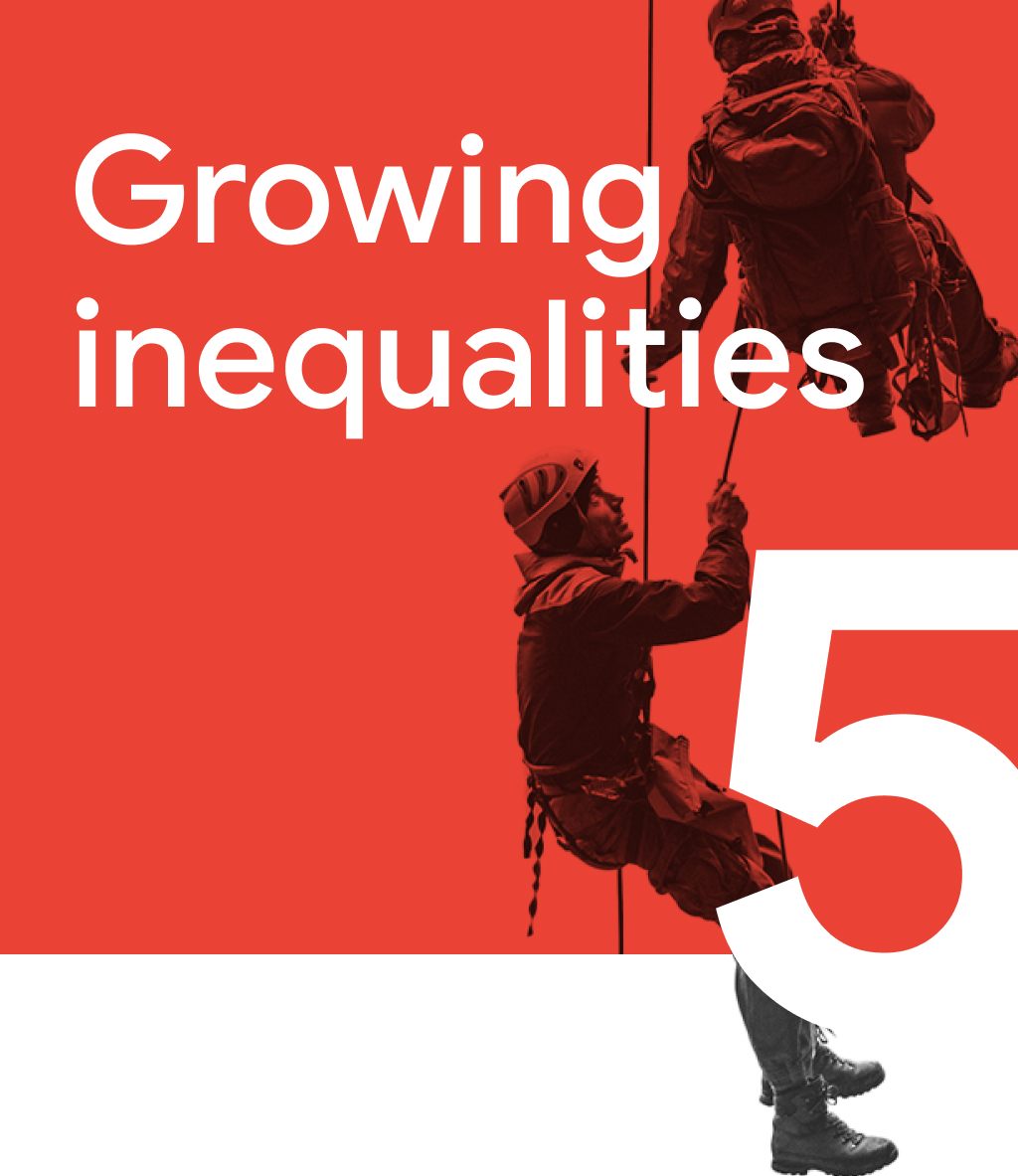
While everyone’s way of life has undoubtedly shifted this past year, the pandemic didn’t affect everyone the same way. It not only exposed existing inequalities, but accelerated them. People are turning to the internet for help: whether they’re existing internet users with fresh financial woes, or newcomers with more basic needs, consumers are searching for ways to overcome the challenges they face.
Dubbed the “inequality virus,” the pandemic has exposed many societal fractures along the lines of wealth, race, and gender. While many of these inequalities existed before COVID-19, the pandemic has played a role in exacerbating them, and the most vulnerable in society have been disproportionately hit.
Lower income households experienced a higher concentration of job losses46 while their children missed twice as many days in a school year compared with those from high income families.47 Women too, suffered increased violence, with 83% in Indonesia reporting that domestic violence worsened due to COVID-19.48

To overcome these inequalities, people are searching online for solutions to help themselves and their communities. Their searches range from unemployment benefits and “buy now pay later” financing options to topics on discrimination and women’s rights, reflecting their growing interest in social issues.
Unfortunately, not everyone has equal access to the support systems they need. The world’s growing reliance on technology means it’s crucial to equip the less privileged with access to digital solutions. Factors like unstable internet access, technical illiteracy, and language barriers can prevent people from joining the rest of the world online, and exacerbate the inequity they already experience.

Indeed, rising searches for local translations, line speed tests, and even free internet services reflect a growing section of society struggling to keep up. When cities shut down during the pandemic, millions of migrants across APAC had to return to their homes, many in rural areas. Without access to the high-speed internet of urban centers, these workers and their families lost jobs and learning opportunities.49 Widespread digital migration on the other hand, has brought more users online from non-metropolitan areas in APAC, hastening the need for the digital ecosystem to evolve to address their specific needs through the acceleration of vernacular, voice, and video solutions.50
People recognize that these societal inequalities cannot be solved by governments and nonprofits alone. The expectation is now also on brands to help drive meaningful change.51 Perceived to be more ethical and competent,52 businesses are uniquely positioned to boost customer loyalty and trust by driving social change. This means that consumers will embrace brands who not only reflect diversity in their campaigns, but take action to create equity in societies as well.


Finding familiarity through local language
Searches show the anxiety that consumers face when transacting in a foreign language. In fact, up to 40% of consumers won’t consider making a purchase unless they can access information in their local language.53 With more new users coming online from non-metropolitan areas, the demand for local translations is continuing to grow.
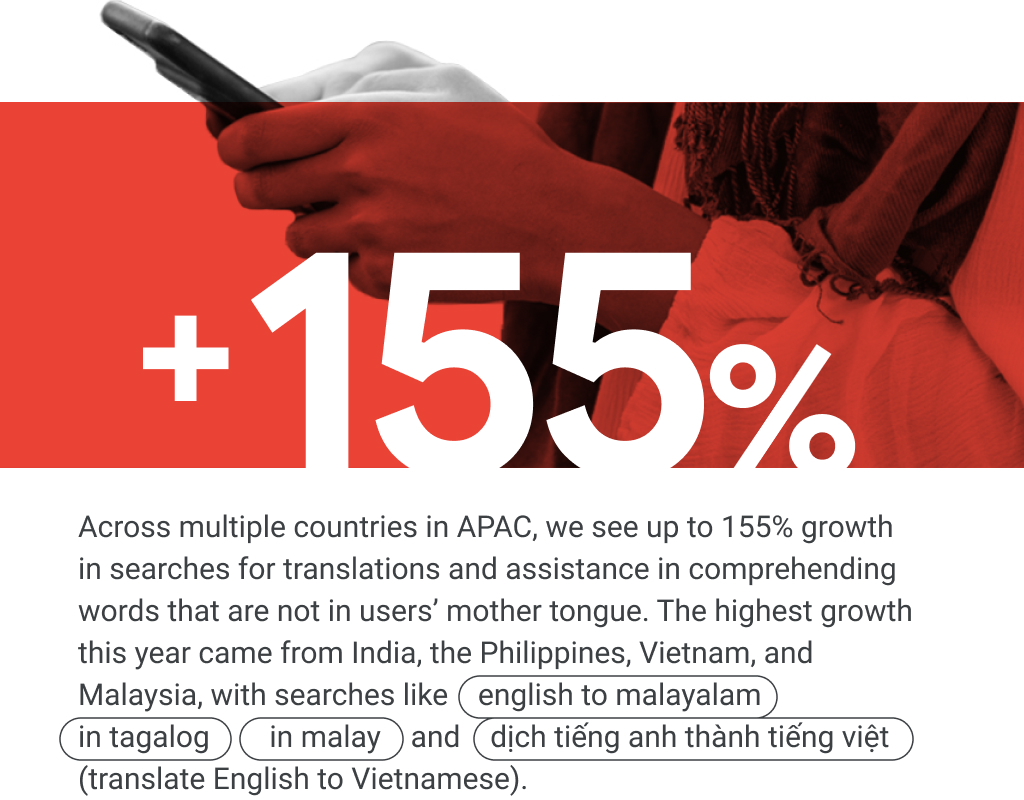
Access to stable and affordable internet
As more needs are being fulfilled online, people are increasingly focused on ensuring that they have reliable and affordable internet access.
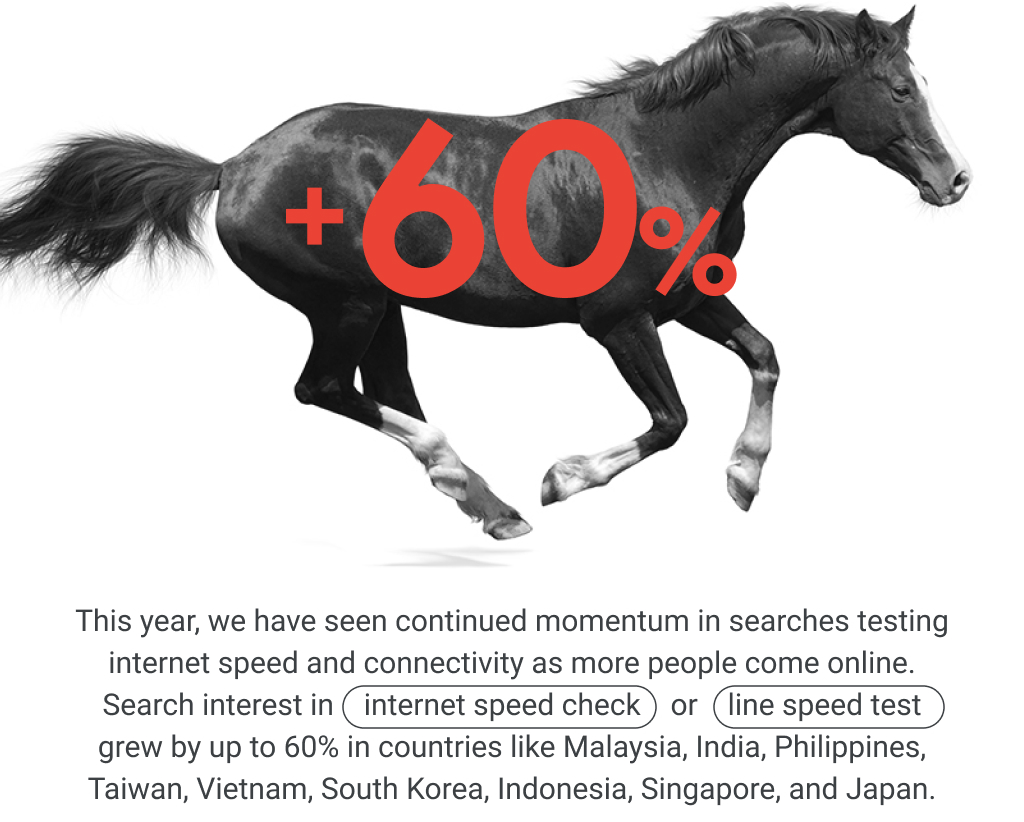

The need for financial support
As APAC experiences high unemployment rates,54 consumers are searching for different ways to alleviate economic concerns. Whether it’s a business grant or a cash loan, people in APAC are looking for financial support to tide them over in an uncertain year.
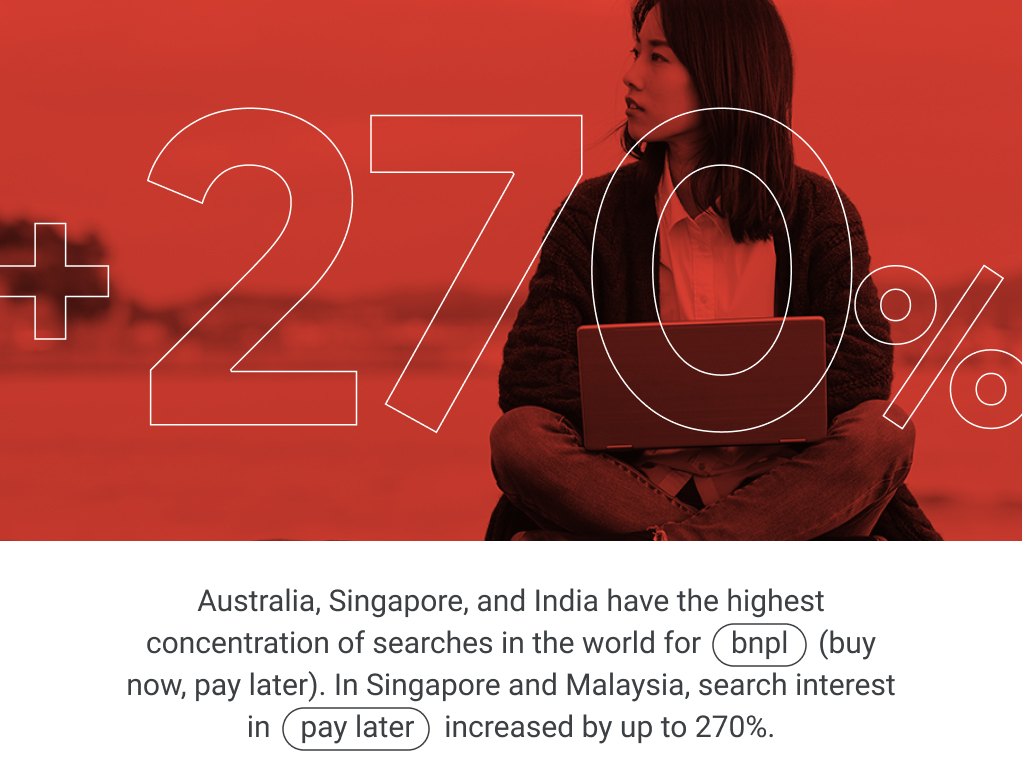

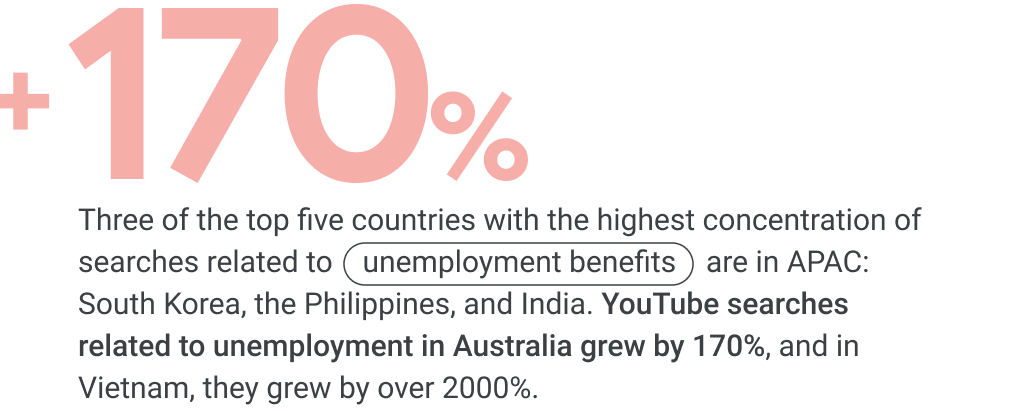
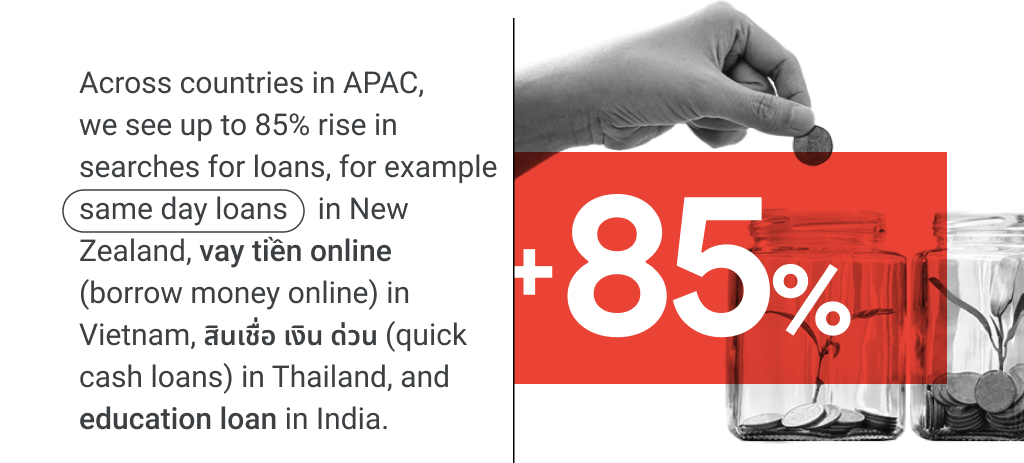
Social inequalities
The general APAC region is still lagging behind the global average when it comes to the importance of equal rights,55 but people are starting to become more curious about inclusion and equity. Continuing from 2020, searches reveal this nascent stage of exploration and awareness growing in APAC.
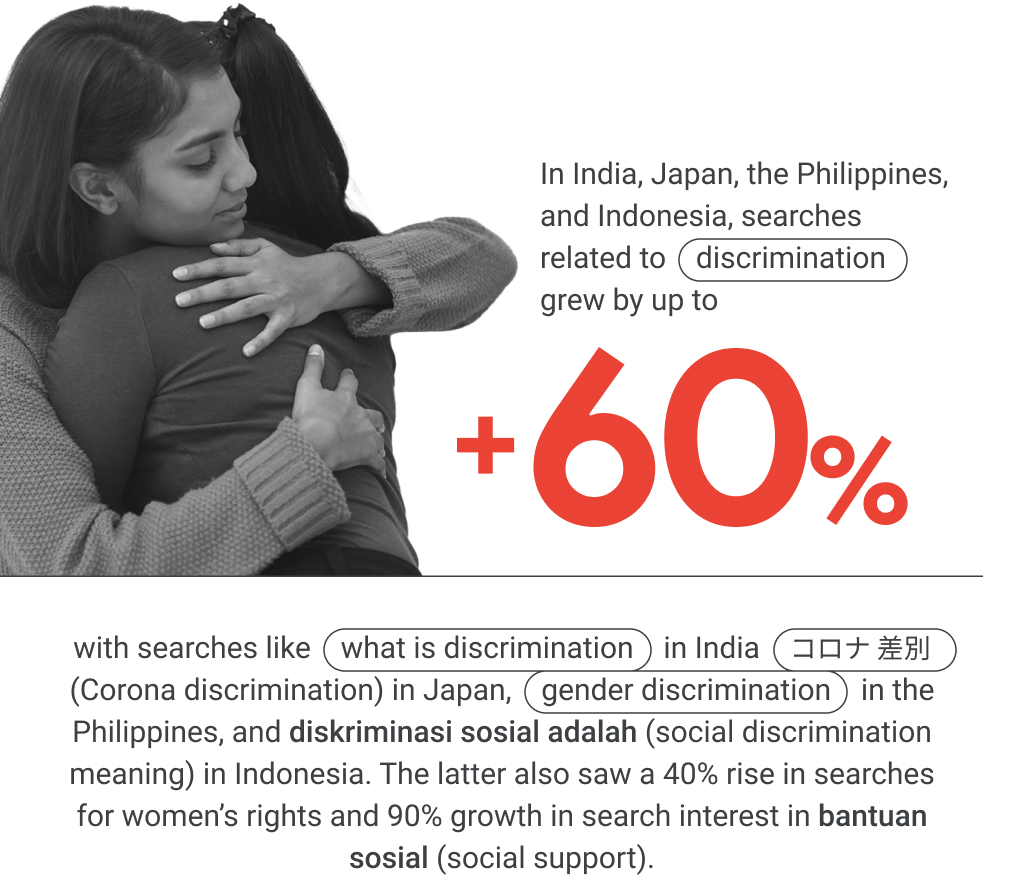
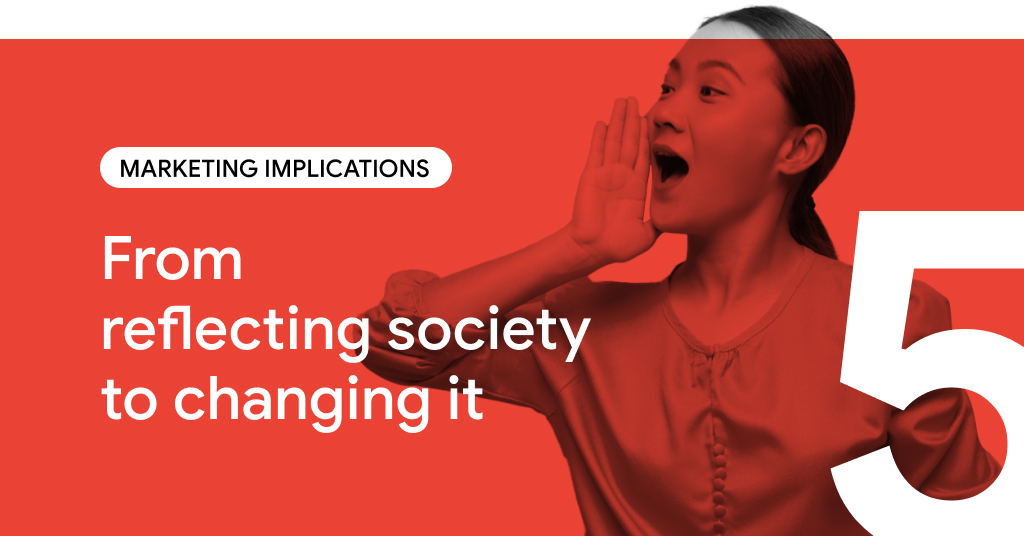
Creating real change is not just about ensuring diversity and inclusion, it is about taking action towards ensuring equity as well. While the pandemic has impacted everyone’s lives, not everyone has been affected in the same way, and rising searches reflect the need for help. Now, reaching customers takes more than simply reflecting society. Brands are also expected to take actions to shape it.

"With four converging global crises over the last year - COVID-19, economic insecurity, financial/health inequities and systemic racism - brands that take a stand get a giant boost in trust. This evolved role for brands offers a new opportunity for brand marketers and real risk if they fail to recognize consumers’ call for brand action."


Don't let language be a barrier.
Engage your global audience with a full language experience that conveys your brand, reputation and trustworthiness. This might entail having translation options for your web content, or adopting voice assistance to make interactions easier for your customers, regardless of literacy levels.

In 2020, Starbucks opened a store in South Korea that focused on inclusive design, such as contactless speech-to-text voice recognition at the till, a braille menu, and digital signage to help consumers keep track of their orders. Staff members also received customized training and a basic course in Korean Sign Language.

Google’s Multitask Unified Model (MUM) has the potential to break down language barriers by transferring knowledge across languages. MUM can learn from sources in a foreign language and use those insights to find the most relevant results in your preferred language.
Google Meet has launched live translated captions to help video calls be more global and inclusive. This equalizes information sharing, learning, and collaboration.


Help close technical, financial, and accessibility gaps.
Keep in mind that your quest for operational efficiency and digital transformation isn’t leaving some of your customers behind. Not all users will have the same level of digital savvy, especially as more new users come online. In fact, many new internet users still struggle with basic tasks. For example, in South Korea, elderly people gave up ordering food because they did not know how to do so through an unmanned kiosk. In India, 73% of users ask for help in getting their phones set up,56 and 40% in Pakistan have installed finance apps but never used them due to factors like requiring help or complicated processes.57
Look at your engagement metrics as indications of how your online platforms or services are used. By paying attention to potential drop-off points, you can get insights on how to improve not least the onboarding experience for customers, but also create ongoing learning moments.

Wagely is a financial wellness app that aims to reduce financial stress for low- and middle-income employees in Indonesia by providing access to earned wages before payday.
In 2021, Grab started a grassroots strategy to realize financial inclusion in Indonesia by empowering sellers and the unbanked with access to financial products and services.
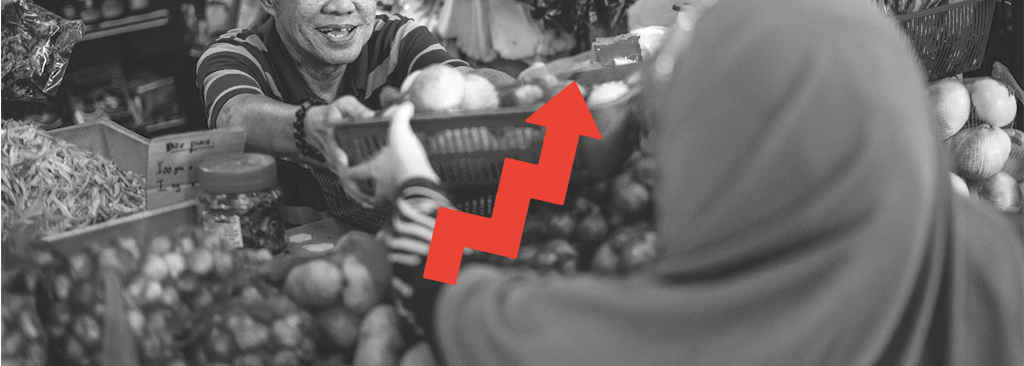

Consumers are drawn to brands that focus on the “we” over the “me.” While 63% of consumers surveyed were more attracted to “brands that focus on making the world a better place,” only 37% said they preferred “brands that focus on making me a better person.”58 The same survey found that 86% of respondents expect brands to act beyond their product or business,59 suggesting that people are increasingly looking for brands that focus on contributing to society and the rest of the world.

Stand for something bigger than profits.
It’s time to redefine success in business and build for a more inclusive and sustainable economy. Brands need to speak up and act beyond their traditional business boundaries, for both consumers and employees.

Honda, the Japan-based automaker, is creating an in-shoe navigation system designed to help people with blindness or low vision. This is an extension of their usual products, but in line with their vision to bring joy by expanding life’s potential, advancing mobility, and improving people’s daily lives.

Build inclusive marketing strategies that benefit people and your bottom line.
Consumers are 4.5X more likely to buy from a brand if it addresses human rights, and 3.5X more likely to do so if it takes on economic inequality.60 As marketers, we are in a unique position to drive authentic and meaningful change, and it starts with the teams we build and the stories we tell. Get inspired by tips for inclusive marketing best practices.

Singapore-based digital telco Circles.Life has unveiled a data plan which enables customers to choose their family, acknowledging non-traditional families such as LGBTQ+, single-parent, and divorced families.
In April 2021, Kao announced it would stop using the words “whitening,” “lightening,” and “bihaku” (beautiful white) in its product marketing.
